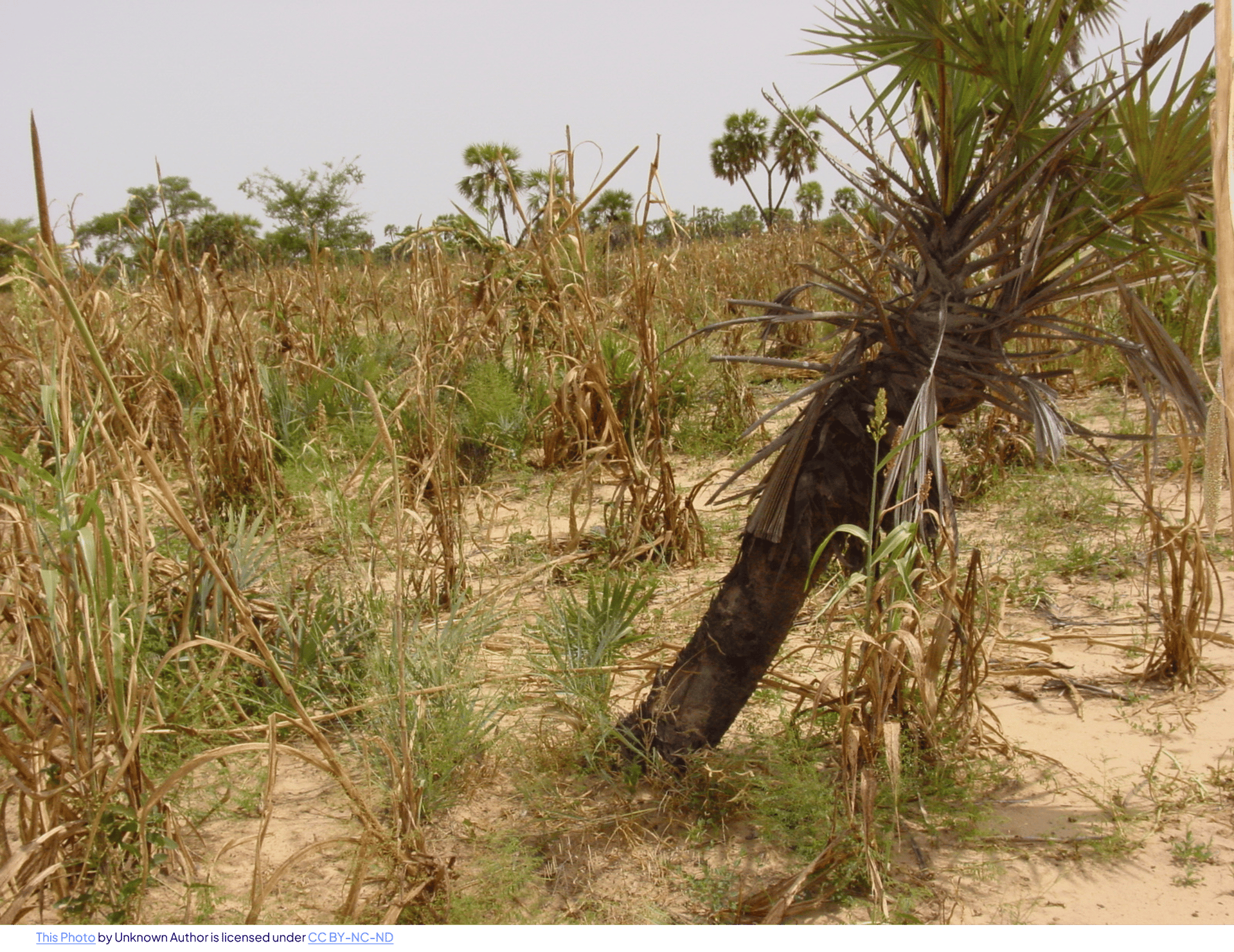Natural Causes of Desertification
- Desertification is:
The process of desert-like conditions spreading into what were previously semi-arid areas, as the quality of soil and its fertility declines over time
- Desertification is a form of land degradation
- Land degradation indirectly affects about 350 million people in the developing world
- Land degradation occurs through changes in soil character, wind erosion, or water shortage (droughts) which leaves the land unproductive or lost
- Soils in arid and semi-arid regions are potentially very fertile, as there is insufficient water to leach minerals from the soil
- These soils have high pH values and intense evaporation at the surface results in the process of capillary rise of soil moisture and minerals - this is salinisation
- When irrigation water is added to land and allowed to evaporate, this has the effect of increasing salinisation
- This process has made a lot of land in the hot deserts infertile
- Increased soil salinity restricts most plant growth and is also phytotoxic when there are high concentrations of sodium in the soil
- Soil erosion is the washing away or blowing away of topsoil, which greatly reduces the fertility of the remaining soil
- This is a natural process but made worse through human activity
- There is a link between soil erosion and desertification

A changing climate is a natural 'physical' cause of desertification
- A changing climate causes a physical response as a positive feedback loop
- The main physical changes are to precipitation and temperatures
| Lowered precipitation rates | Increased intensity of the precipitation | Increased temperatures |
|
Precipitation patterns are becoming unpredictable, with drought events increasing and extending for several years Less precipitation decreases the amount available for vegetation and growth is reduced Roots bind the soil and fewer roots expose soil to erosion by the wind Soil becomes less fertile and desertification sets in |
Increased intensity of rainfall increases surface runoff as the ground is dry and compacted Soil is unable to capture and store water Soil is exposed to sheet wash and is carried away, leaving bare soil behind Vegetation is unable to grow and therefore, no roots to bind soil Soil becomes less fertile which leads to a loss of productivity and increased desertification |
From 1900 to 2020, global surface temperatures have increased by 1.08°C and are set to continue to rise As temperatures increase, the rate of evaporation and transpiration will also increase This leads to the drying up of watercourses and an absence of surface water This lowers the water table, increasing salinisation, and causing the soil to become toxic Vegetation growth decreases, exposing the soil to wind erosion There is an increased presence of dry, loose soil, that is easily lost as dust storms |
- Characteristics of desertification include:
- Absence of surface water
- Dried up watercourses
- Lowered water table
- The increased salt content of the soil
- Degraded or lost vegetation
- Exposed areas of soil
- Presence of dry, loose, infertile soil
Worked example
What evidence is there of desertification in the landscape shown in Figure 1?
[4 marks]

Figure 1: Landscape in Senegal, West Africa
Answer:
- There is an absence of surface water, which will increase in the salt content of the soil [1]
- Ground vegetation is sparse with large patches of dry, loose soil showing [1], which will increase soil erosion as bare soil is exposed to wind [1d]
- Vegetation is becoming degraded - brown and dry, indicating the soil is becoming less fertile [1], increasing the presence of dry, loose sand [1d]


